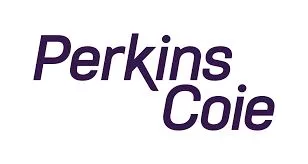- within Real Estate and Construction topic(s)
- with readers working within the Retail & Leisure industries
- within Real Estate and Construction, Transport and Family and Matrimonial topic(s)
Key Takeaways
- If signed by Governor Gavin Newsom, SB 79 would require local approval of qualified transit-oriented housing projects near certain major transit stops in an anticipated eight urban counties, increasing allowable residential density in transit-rich areas.
- The bill sets specific height and density limits for projects, with required affordable housing set-asides for lower-income households.
- Local governments retain some authority to limit or modify SB 79's standards by excluding certain sites or adopting alternative transit-oriented development plans that maintain overall zoned capacity.
- Projects meeting SB 79 and nonconflicting local standards are generally protected from denial, and some may qualify for streamlined, ministerial approval under existing state law.
Arguably one of the most controversial and transformative housing bills in California history, SB 79 narrowly passed the legislature late last week. Governor Gavin Newsom is expected to sign the bill into law within the coming weeks.
More than seven years in the making, SB 79 provides that qualified transit-oriented housing development projects "shall be an allowed use" for sites zoned for residential, mixed, or commercial development within one-half or one-quarter mile of transit-oriented development (TOD) stops located in "urban transit counties," provided certain requirements are met.
If signed, SB 79 upzoning would apply to those counties with more than 15 passenger rail stations. Although "passenger rail stations" is not defined in the bill, the project sponsors state that jurisdictions in only eight California counties—San Francisco, San Mateo, Santa Clara, Alameda, Sacramento, Los Angeles, San Diego, and Orange—would be affected. SB 79 generally would apply to affected cities beginning on July 1, 2026, but the law would not apply within unincorporated county areas until the seventh regional housing needs allocation (RHNA) cycle.
The chart below shows SB 79's maximum height and density standards, as well as the residential floor area ratio (FAR) that a local agency's development standards may not preclude. Local agencies, though, have various options for lowering these height, density, and FAR standards for individual sites or exempting the sites from SB 79, as further described below.
|
Type of TOD Stop |
Project Distance From Stop (TOD Zone) |
Development Standards Available to Transit-Oriented Housing Projects Under SB 79 |
|---|---|---|
|
Tier 1: Major transit stop served by heavy rail transit or "very high frequency" commuter rail, as each of these terms is defined in SB 79 (Not high-speed rail or Amtrak) |
Adjacent to stop |
|
|
Within ¼ mile of stop |
|
|
|
Between ¼ and ½ mile of stop in a city with at least 35,000 residents |
|
|
|
Tier 2: Major transit stop, excluding Tier 1 stops, served by light rail transit, "high-frequency" commuter rail, or bus rapid transit, as each of these terms is defined in SB 79 (Not high-speed rail or Amtrak) |
Adjacent to stop (within 200 feet of a pedestrian access point to the stop) |
|
|
Within ¼ mile of stop |
|
|
|
Between ¼ and ½ mile of stop in a city with at least 35,000 residents |
|
To qualify for these development standards, the following additional transit-oriented housing project attributes are required:
- Density must be the greater of 30 du/ac or the minimum density required under local zoning.
- Average habitable floor space must not exceed 1,750 square feet.
- If the project is more than 10 units, housing must be dedicated
to lower income households at any one of the following levels or at
such higher levels if required by the local agency's
inclusionary housing ordinance:
- 7% to extremely low-income households
- 10% to very low-income households
- 13% to low-income households
- Projects must comply with state law requirements for "replacing" any existing dwelling units and with other limitations on residential demolition.
- Projects must be consistent with the height, noise, and safety standards of any applicable airport land use plan or zone, as well as objective statewide fire safety standards.
- For any building over 85 feet in height, all construction workers must be paid prevailing wages, and a skilled and trained workforce must be used.
Transit-oriented housing projects that meet the state's density bonus eligibility requirements are entitled to additional density bonus units as provided by law. Projects that meet specified minimum density requirements are also eligible to receive the following additional concessions, in addition to those granted by the California Density Bonus Law (up to five concessions), except that, in nearly all circumstances, the local agency would not be required to increase the maximum height allowed under SB 79:
- One additional concession for low-income units
- Two additional concessions for very low-income units
- Three additional concessions for extremely low-income units
For purposes of enforcing the California Housing Accountability Act, projects consistent with both the SB 79 requirements and applicable, nonconflicting local objective general plan and zoning standards, as may be modified by Density Bonus Law concessions or waivers, would be deemed "consistent, compliant and in conformity with" any applicable plan, program, policy, ordinance, standard, requirement, or similar provision. Accordingly, a local agency would not be able to deny the transit-oriented housing project unless the agency made written findings that the project would have a specific, adverse impact upon public health or safety that could not feasibly be mitigated or avoided.
SB 79 does not modify the requirements of the California Environmental Quality Act (CEQA) or require a ministerial approval process, though certain SB 79 projects are eligible for streamlined, ministerial approval under the preexisting state law commonly known as "SB 35" or "SB 423." Projects proposed for streamlining must comply with all requirements of that law, except that affordable housing requirements do not depend on whether the local agency is meeting its RHNA targets. SB 79 projects not subject to SB 35/SB 423 streamlining are reviewed under the jurisdiction's standard review process and the Housing Accountability Act.
Significantly, SB 79 provides local agencies with at least three paths to limit or modify the new development standards within their jurisdiction, as desired. First, until one year following adoption of the seventh-cycle housing element (until 2032 in the Bay Area), local agencies may adopt an ordinance excluding several types of sites from eligibility under SB 79. A site may be excluded if its allowable density and residential FAR are at least 50% of that required under SB 79 or, potentially, where even less density and residential FAR are allowed, provided one or more other site conditions or standards are met (for instance, the site is in a low-resource area).
Second, a local ordinance may exempt the following two additional types of areas within one-half mile of a transit-oriented development stop: (1) an area where there is no walking path of less than one mile that connects the area to the stop and (2) a previously designated "employment lands" area of at least 250 acres, provided all parcels are primarily dedicated to industrial use and the area is located in a jurisdiction with at least 15 transit-oriented development stops.
Third, a local agency may adopt a "transit-oriented development alternative plan." The plan is subject to several limitations, including maintaining at least the same total net zoned capacity provided for under SB 79, across all transit-oriented development zones within the jurisdiction.
Finally, if signed by Governor Newsom, SB 79 also would provide new land use authority for transit agencies. A transit agency's board of directors may adopt zoning standards for district-owned property located in a TOD zone that, with a few exceptions, are consistent with the development standards for height, density, FAR, and uses that apply to transit-oriented residential projects. There are extensive detailed provisions regarding required project attributes, as well as the process the transit agency must follow in adopting zoning standards, including compliance with CEQA, affordability requirements, and certain labor standards. Once adopted, the transit agency's zoning standards would be considered the same as locally approved zoning.
The content of this article is intended to provide a general guide to the subject matter. Specialist advice should be sought about your specific circumstances.



